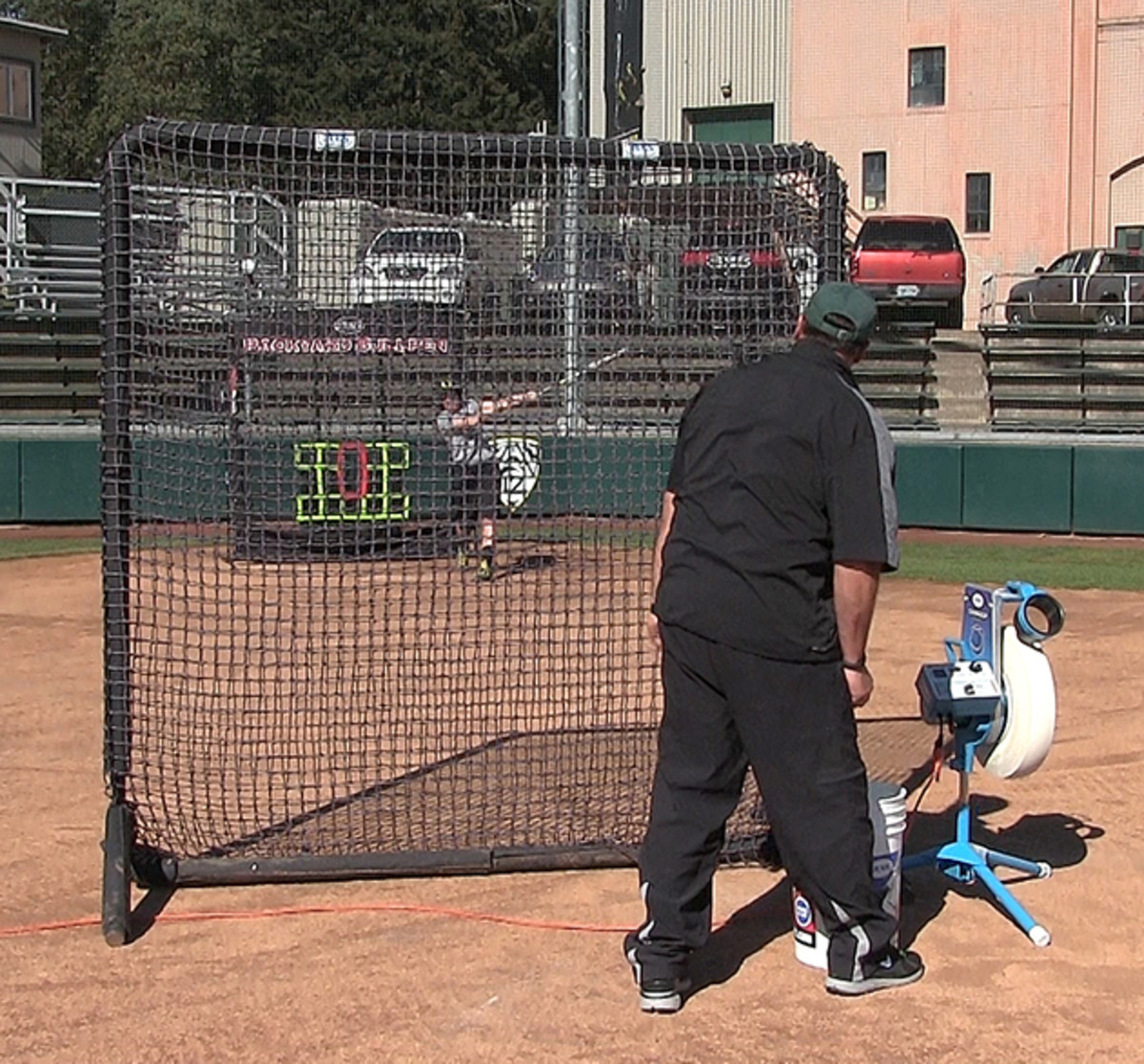New pitching machine switches speeds without tipping the pitch

John Paulson, founder of Jugs Sports, created a pitching machine so innovative it made it into the pages of Sports Illustrated in the Jan. 7, 1974 issue. Now, over 40 years later, John’s son Butch, the president of Jugs, has thrown a changeup into baseball and softball training. And nobody can see it coming.
The new Jugs Changeup Pitching Machine serves as the first pitching machine to switch between fastballs and changeups without any tell for the batter. Butch says that never before has a portable pitching machine been able to throw a changeup without somehow giving it away.
A traditional pitching machine takes six to seven seconds between pitches, giving Jugs limited time to discreetly change settings—and not change delivery angles—without giving away the switch. Coaches can toggle back and forth between the two speeds either with an on-device button or a remote control. The tire doesn’t slow down; the motor doesn’t change speeds.
“There is no discernable way for a batter to get tipped off,” Butch says.

Jugs developed a new algorithm that delivers the changeup without changing the height or angle of the delivery. The ball does get delivered lower in the strike zone than when the fastball comes through, but Butch says that is where you want the changeup to cross the plate anyway.
The SI Extra Newsletter Get the best of Sports Illustrated delivered right to your inbox
Subscribe
Mike White, Oregon’s head softball coach, was one of the first to try out the machine on his nationally ranked Ducks. Butch says the feedback he received from the players was good, even if it doesn’t sound like it. “We asked how they like the changeup machine and (the players) said ‘we hate it’ because it made them look stupid at the plate,” Butch says.
The new Jugs machine looks the same as past models, changing only the inside specifications and not the outward appearance. The ability to switch between the fastball and changeup all comes from internal programming, a three-year process to fine-tune.
Training with Mike Trout: Angels' centerfielder feels the need for speed
“There is just a lot of energy going through there to slow down the thing within six seconds or speed it back to fastball in six seconds,” Butch says. “I can’t tell you how many iterations we went through to get the thing to work right.”
While the softball machine launched early models in 2015, the baseball version has started to come into its own ahead of this season. Still more popular in softball circles, Jugs remains the top-selling pitching machine in the world and does have Major League Baseball players using their product—Albert Pujols is a paid endorser—even if Jugs doesn’t put a focus on glitz. “We are not selling style,” Butch says, “we are selling stuff.”
“Since my Dad was in the article in 1974 there hasn’t been any kind of major breakthrough in terms of pitching machines,” Butch says. “The look changed, but from an impact on batting practice it didn’t change anything.” Jugs wanted to change speeds on that level of advancement.
Tim Newcomb covers sports aesthetics—stadiums, sneakers and gear—for Sports Illustrated. Follow him on Twitter at @tdnewcomb.
